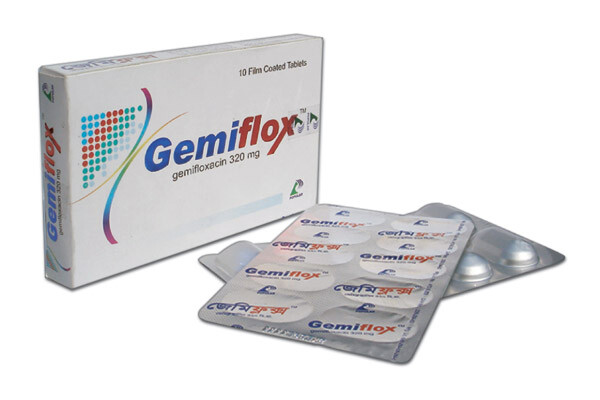Drug Nomenclature
Adverse Effects and Precautions
As for Ciprofloxacin. Skin rashes may be more common with gemifloxacin and treatment should be stopped if they occur.

Interactions
As for Ciprofloxacin.
Antimicrobial Action
As for Ciprofloxacin. Gemifloxacin is reported to have greater activity against Gram-positive bacteria, including pneumococci, than ciprofloxacin.
Pharmacokinetics
Gemifloxacin is rapidly absorbed from the gastrointestinal tract with an absolute bioavailability of about 71%. Peak plasma concentrations occur 0.5 to 2 hours after an oral dose. Gemifloxacin is widely distributed into body tissues including the bronchial mucosa and lungs, and is about 55 to 73% bound to plasma proteins. It undergoes limited hepatic metabolism and has an elimination half-life of about 7 hours. It is excreted as unchanged drug and metabolites in the faeces and urine. Urinary excretion is by active tubular secretion and is reduced by probenecid. Distribution into milk has been found in rats.
Uses and Administration
Gemifloxacin is a fluoroquinolone antibacterial with actions and uses similar to those of ciprofloxacin. It is given orally, as the mesilate, for the treatment of community-acquired pneumonia and acute bacterial exacerbations of chronic bronchitis.
Doses are expressed in terms of the base; 399 mg of gemifloxacin mesilate is equivalent to about 320 mg of gemifloxacin. T
he usual dose is 320 mg once daily for 5 days in patients with bronchitis or for 7 days in those with pneumonia. For details of reduced doses in patients with renal impairment, see below.
Administration in renal impairment
Doses of gemifloxacin should be halved in patients with a creatinine clearance of 40 mL/minute or less, including those receiving haemodialysis or continuous peritoneal dialysis.
Proprietary Preparations
Brazil: Factive; Russia: Factiv; South Africa: Factive; USA: Factive.

